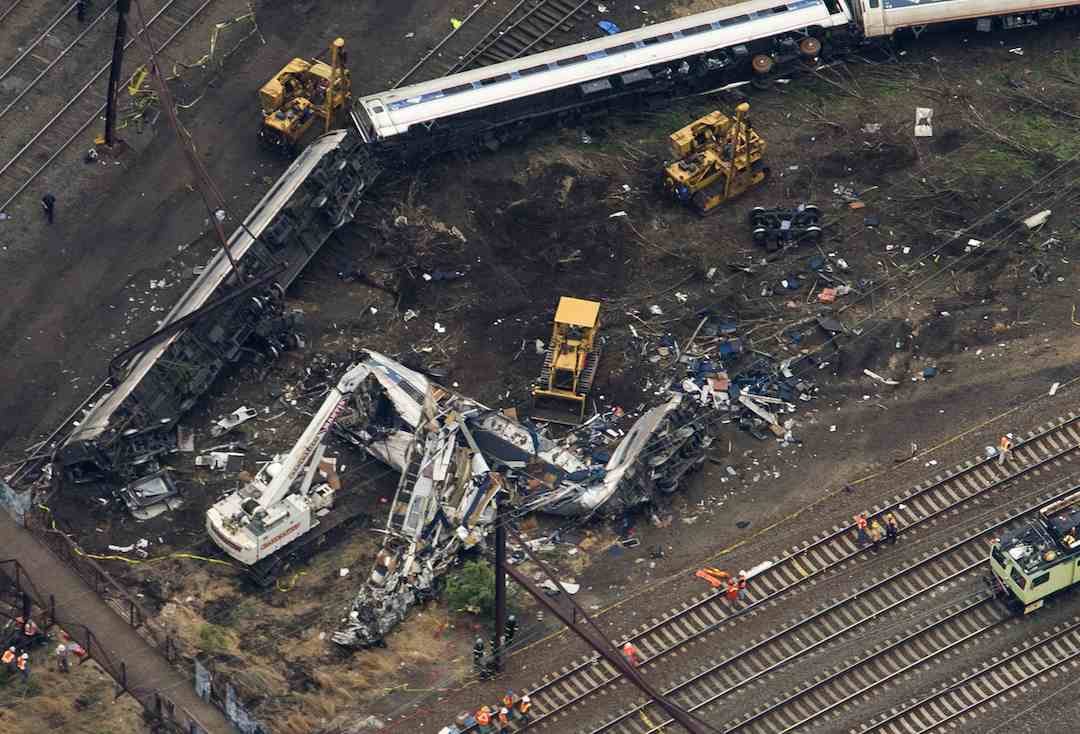SUMMARY
This is AI generated summarization, which may have errors. For context, always refer to the full article.

WASHINGTON, United States – This week’s deadly train derailment in Philadelphia could have been averted if technology that has been available for years had been installed, lawmakers and experts say.
A system called Positive Train Control (PTC) combines satellite and computer data to monitor train movements and prevent them from going too fast, blowing through red lights or hitting other locomotives on the track.
Amtrak Train 188, which was headed from Washington to New York, crashed Tuesday evening as it entered a curve while traveling at a little over 100 mph (160 kph), double the 50 mph speed limit.
Investigators are still probing the cause of the crash, which killed at least seven people and injured about 200 others, but are focusing on the engineer – the American term for a train driver.
As the name suggests, positive train control systems can override a driver’s actions – or lack thereof.
Computer algorithms calculate the distance between a red light and a train. If a train is moving too fast for a driver to stop safely, the backup safety system intervenes and automatically applies the brakes.
“It will not allow you to violate a speed restriction, a work-zone restriction or a red signal,” Joseph Szabo, a former head of the Federal Railroad Administration, told Agence France-Presse. “It just won’t let you violate it.”
In 2008, a collision between a Metrolink passenger train and a freight train in Chatsworth, north of Los Angeles, killed 25 people and injured 135 others.
The National Transportation Safety Board, the agency tasked with investigating air and major ground-transport accidents in the United States, found that the driver, who was killed in the crash, was sending text messages on his phone.
He went through a red stop signal and smashed into an oncoming train.
Positive train control “would have prevented the accident, had it been monitoring the trains that collided,” the NTSB said in a document called “Most Wanted Transportation Safety Improvements” for 2015.
In the wake of Tuesday’s crash, national railway figures renewed calls for backup safety systems.
“We’re very keen on positive train control,” NTSB board member Robert Sumwalt told reporters on Wednesday.
“Had such a system been installed in this section of track, this accident would not have occurred.”
The NTSB has been calling for the national implementation of positive train controls for decades.
One human error from an accident
“While the NTSB has called for a system like this for over 45 years, it still has not been fully implemented in our commuter, intercity, and freight trains. Without it, everybody on a train is one human error away from an accident,” the agency said.
In the aftermath of the Chatsworth collision, US lawmakers passed a law requiring the nation’s main rail firms to implement a safety system by the end of 2015.
However, the Senate Committee recently approved a bill that would give railroads a five- to-seven year extension. Senator Dianne Feinstein from California and other lawmakers last month introduced a bill to allow delays of only one year, on a case-by-case basis.
“Further unnecessary delay in implementing PTC – especially a blanket delay as proposed by the Commerce Committee – is simply unacceptable. If we have the technology to save lives, we must use it,” Feinstein said in a statement.
Rollout of PTC has varied widely across America’s vast railway network and the dozens of freight and passenger companies that use it.
An Amtrak representative was not immediately available for comment but Szabo said the network is actually doing well at installing the system, though unfortunately not where the crash occurred.
“The irony is that Amtrak is probably much further along than almost anyone else,” Szabo said. “They do have (PTC) on much of the northeast (rail) corridor – but not on that particular location.”
Rail companies face broad challenges in installing PTC. Cost is a major issue and America’s railroads are perpetually struggling for federal dollars.
Coincidentally on Wednesday, Republicans and Democrats in Congress argued over funding for Amtrak and a panel voted to reduce grants to the company by $250 million. – Thomas Watkins / Rappler.com
Add a comment
How does this make you feel?
There are no comments yet. Add your comment to start the conversation.